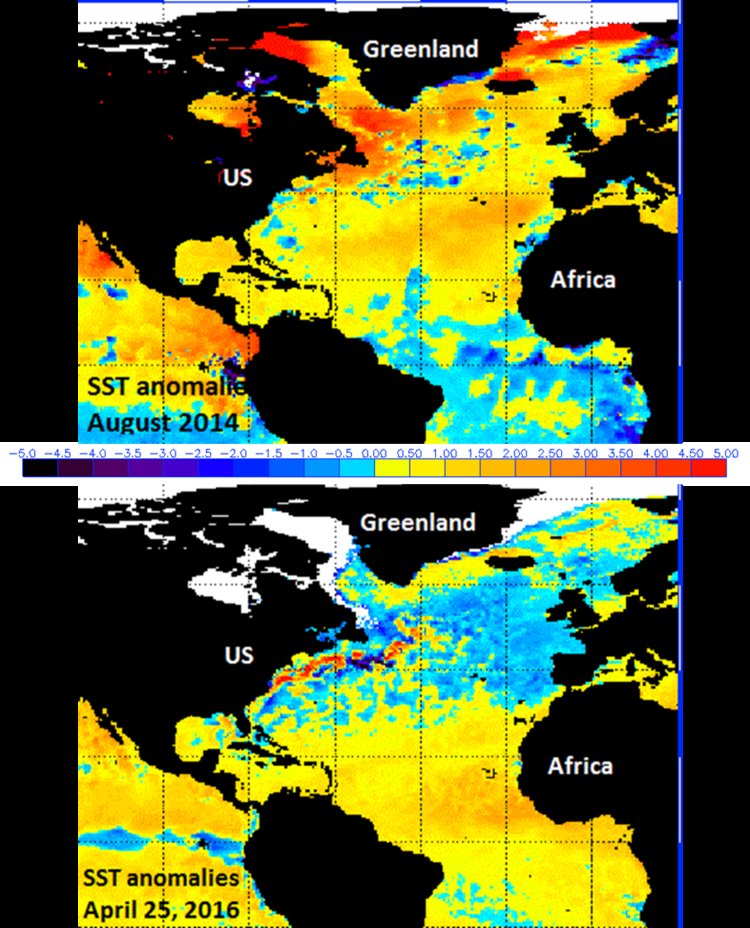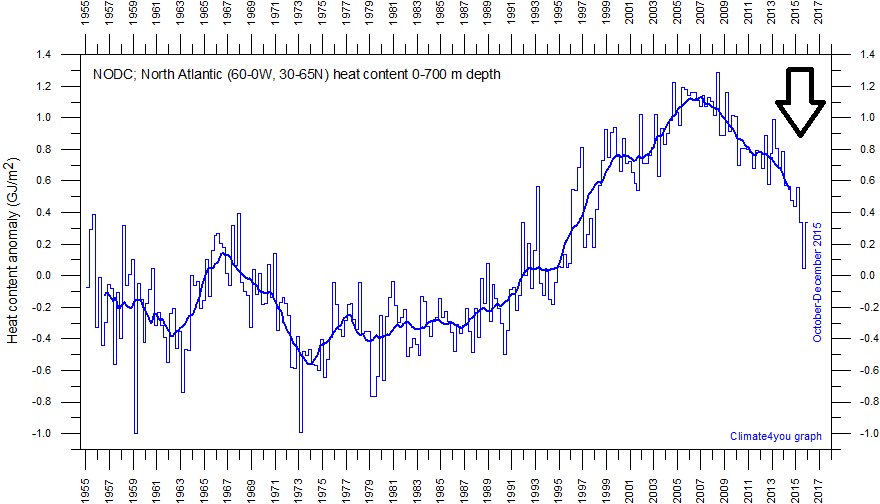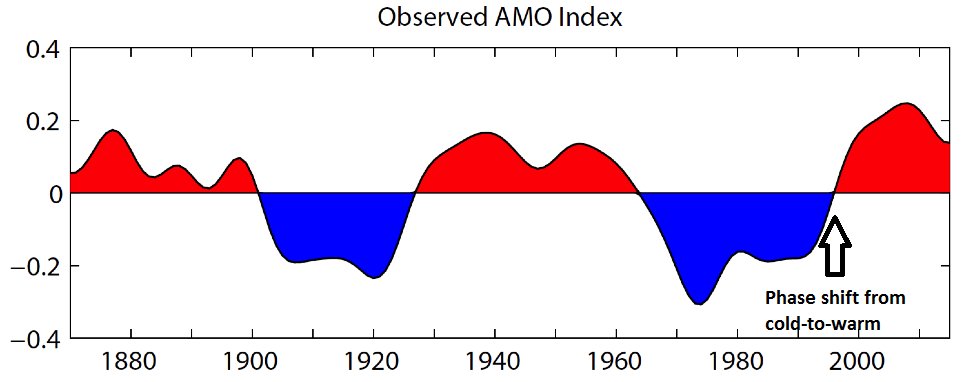
Here I'll sum up the main points. Of course do read the entire post at Vencore for all the details.
In a nutshell the sites writes that the North Atlantic "is now showing signs of a possible long-term shift back to colder-than-normal sea surface temperatures (SST) and this could have serious implications on US climate and sea ice areal extent in the Northern Hemisphere".
Vencore supplies the following chart of North Atlantic heat content (0 - 700 meters deep):


But that warmth appears to be waning as the North Atlantic is now heading toward its cool phase. That cooling down is confirmed by the Japan Agency for Marine-Earth Science and Technology (JAMSTEC). Note how the transitions take place quickly, in a matter of just a few years.
Serious impacts on sea ice and winters
Vencore writes that the North Atlantic cooling is likely going to have some "significant impacts on Northern Hemisphere (NH) sea ice areal extent over the coming decades", and thus could be a major blow to climate science forecasts of a melting Arctic. If the North Atlantic cooling continues, then Vencore warns we should expect Arctic sea ice to return to 1990s levels, if not even greater.
The cooling North Atlantic will also have serious ramifications for North America's climate. Vencore reports that winters over large parts of North America are much colder during cool North Atlantic phases, and significantly warmer during the warm phases. So if these trends should continue, it means that the days of the global warming scare are numbered, or they will have to move to the other hemisphere.



you can't compare the two. Summer ocean temperatures are always greater than Spring (April). This is comparing apples and oranges.